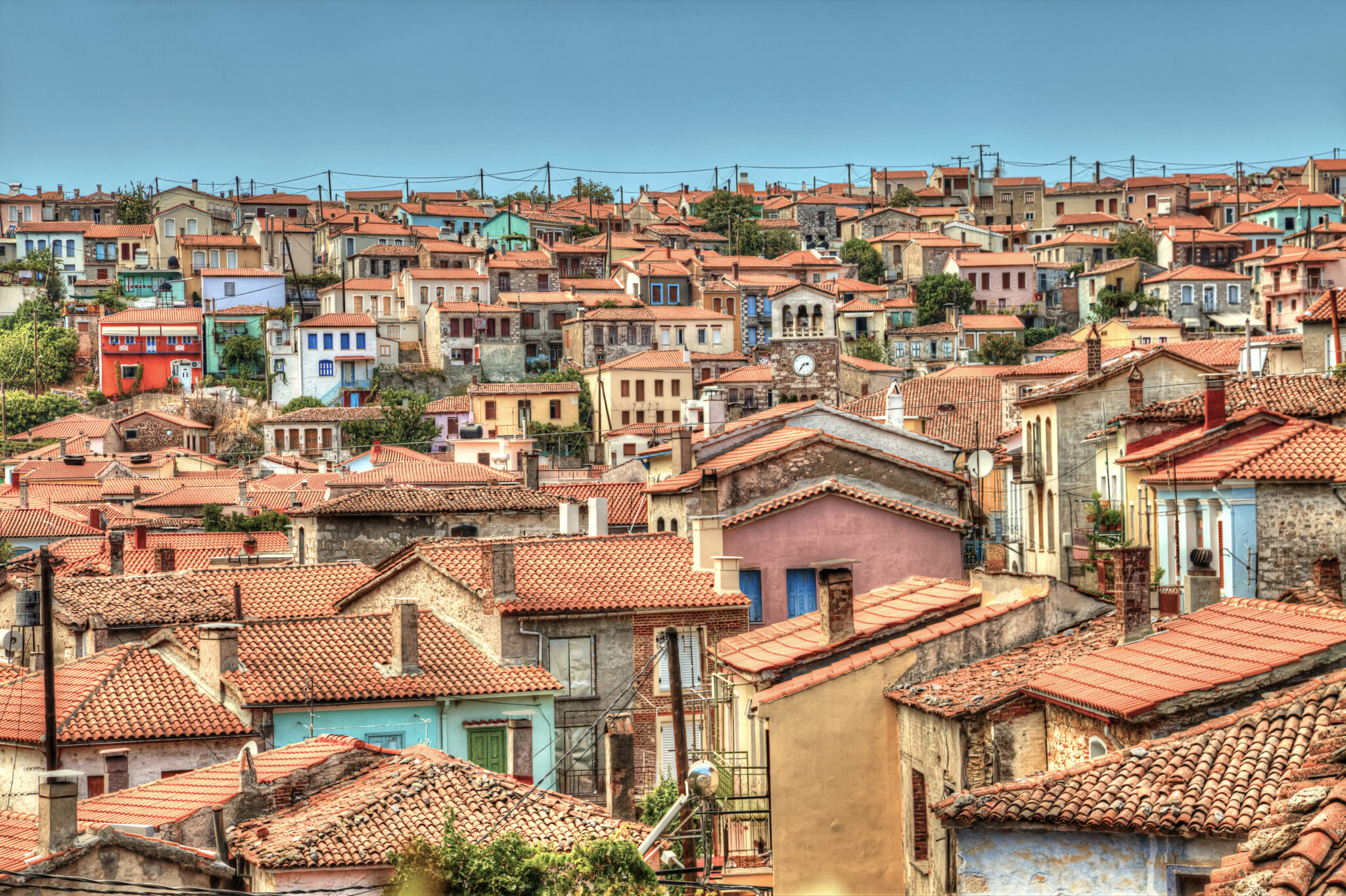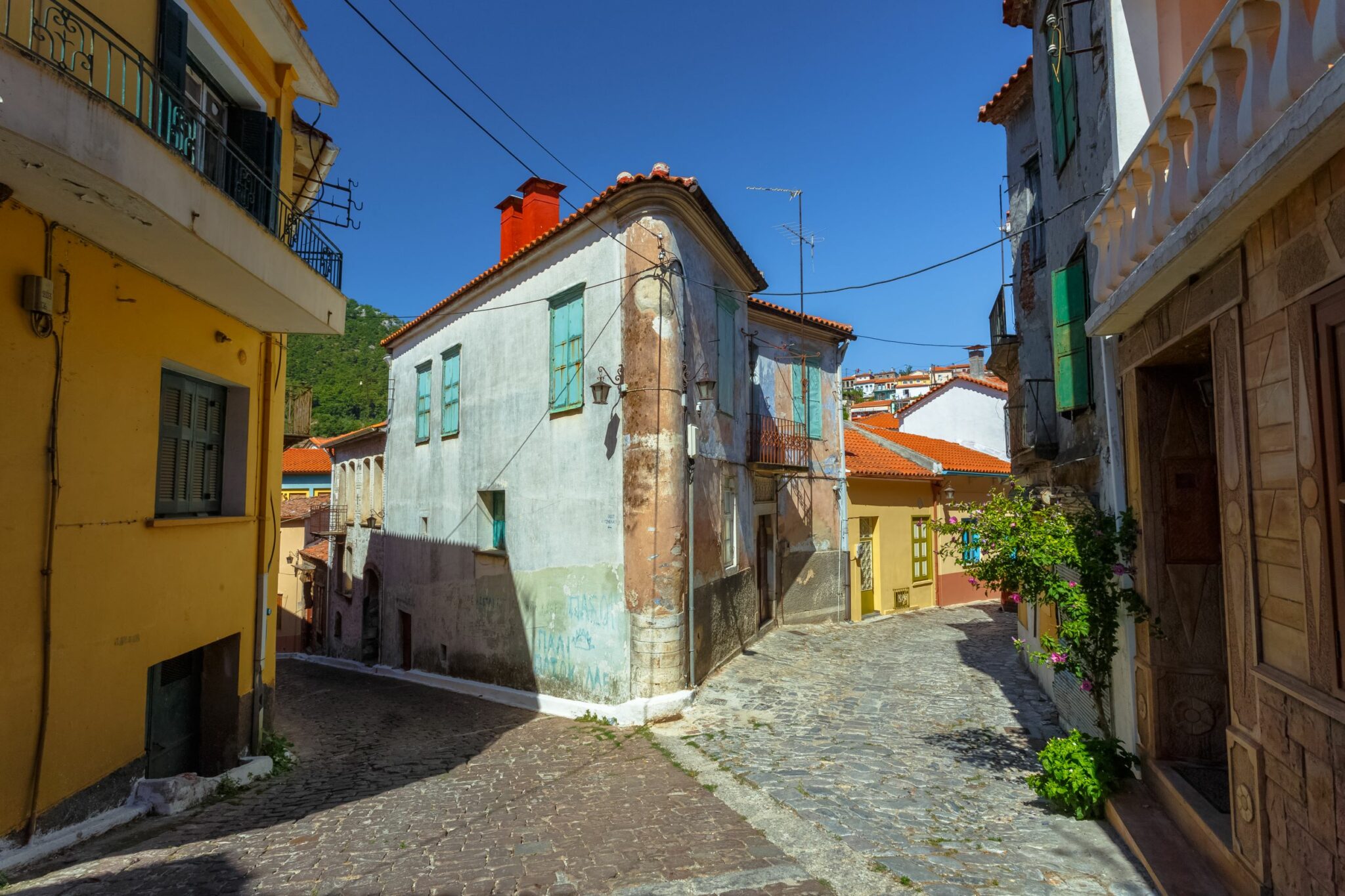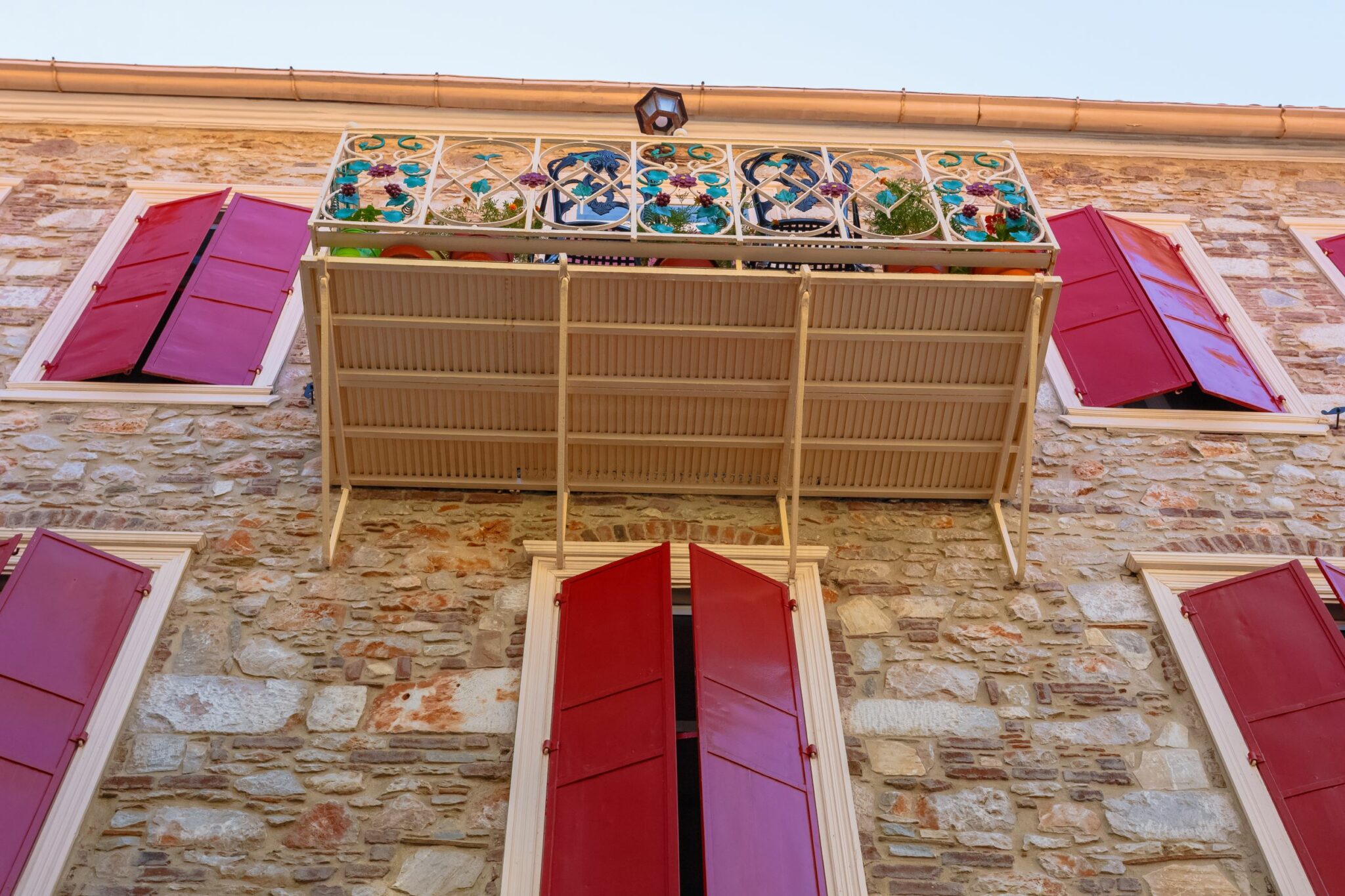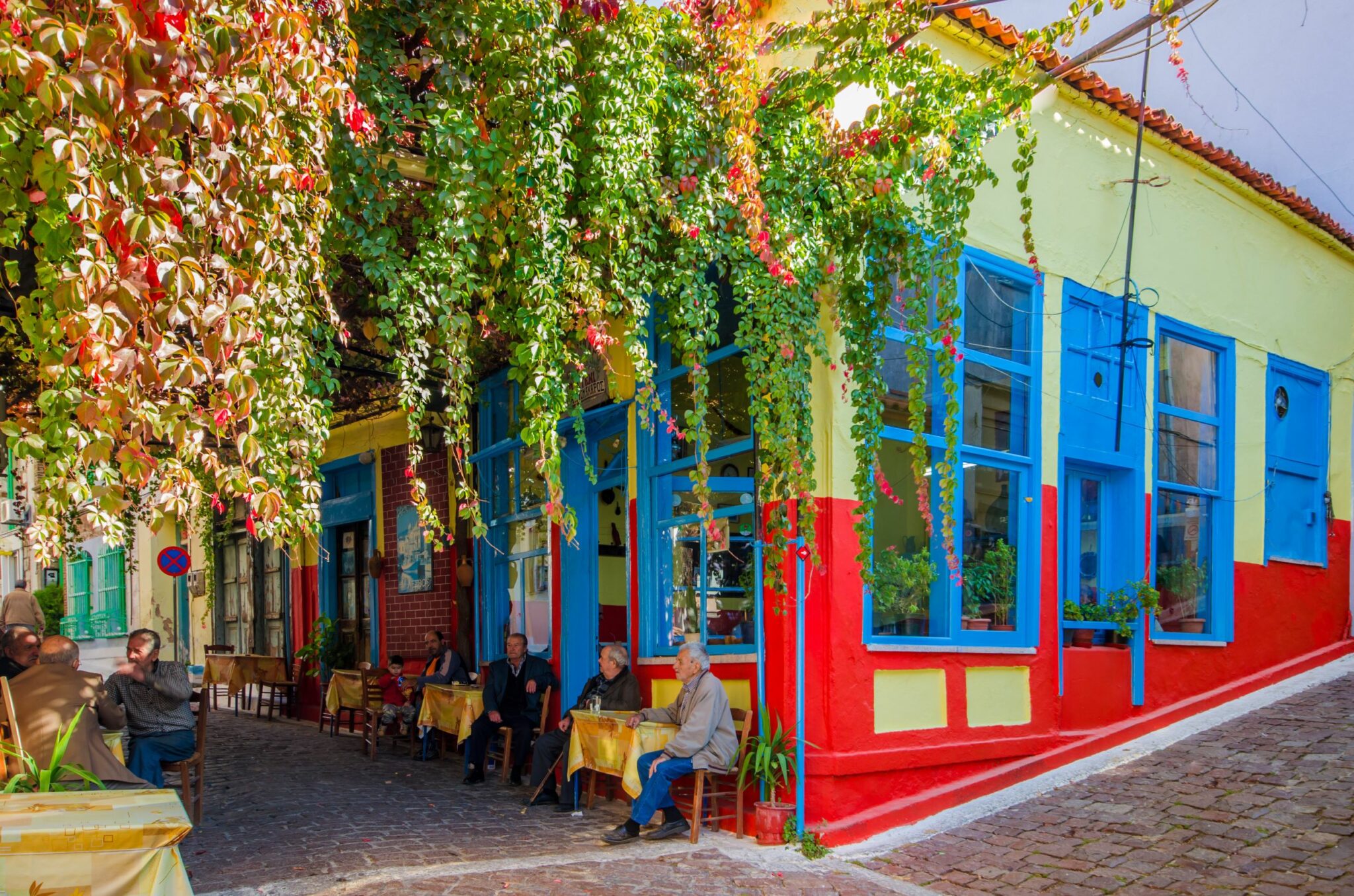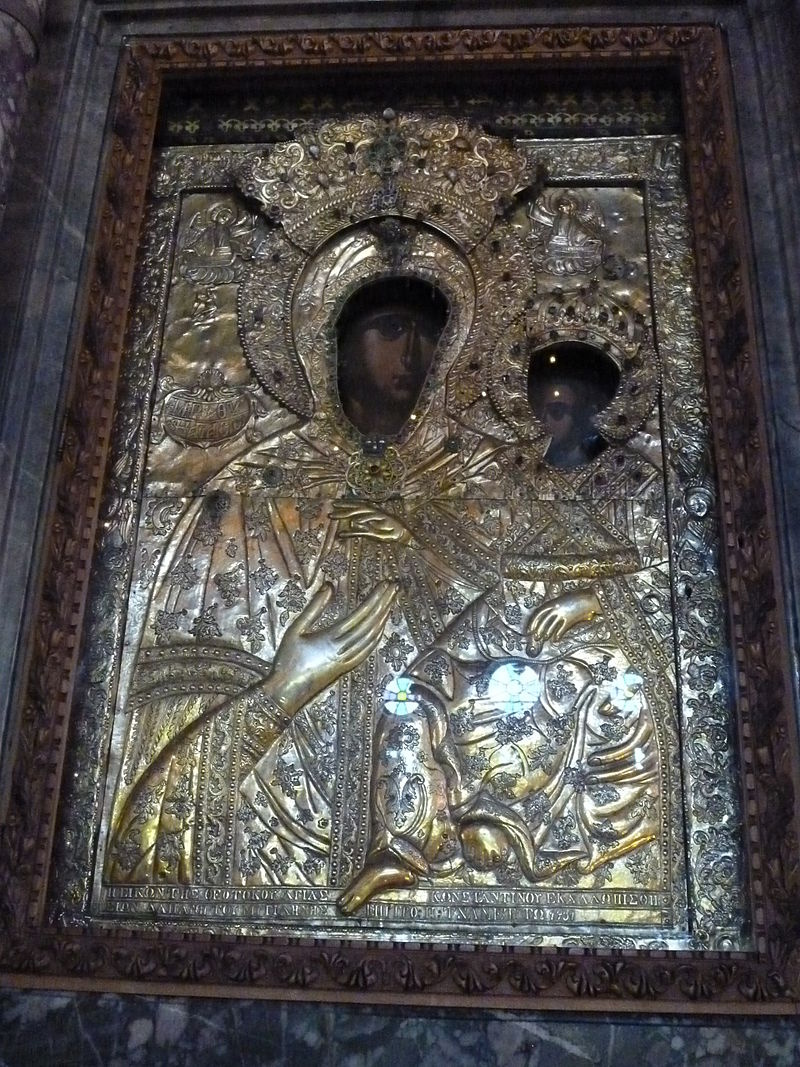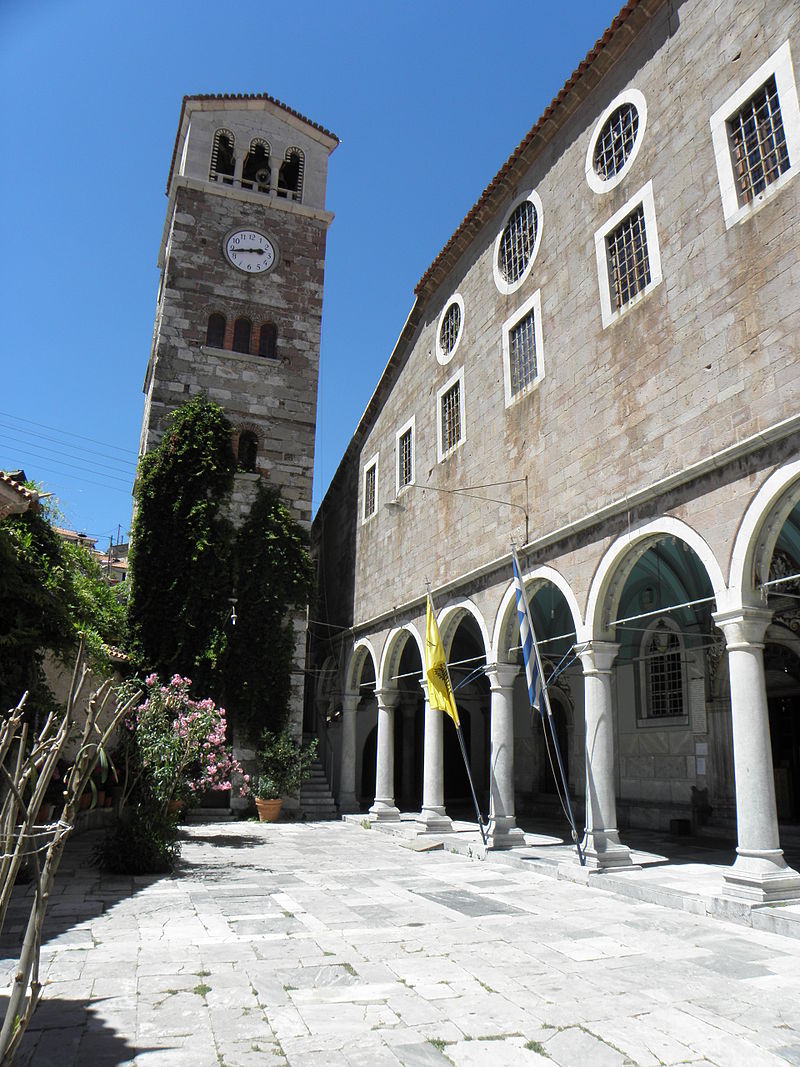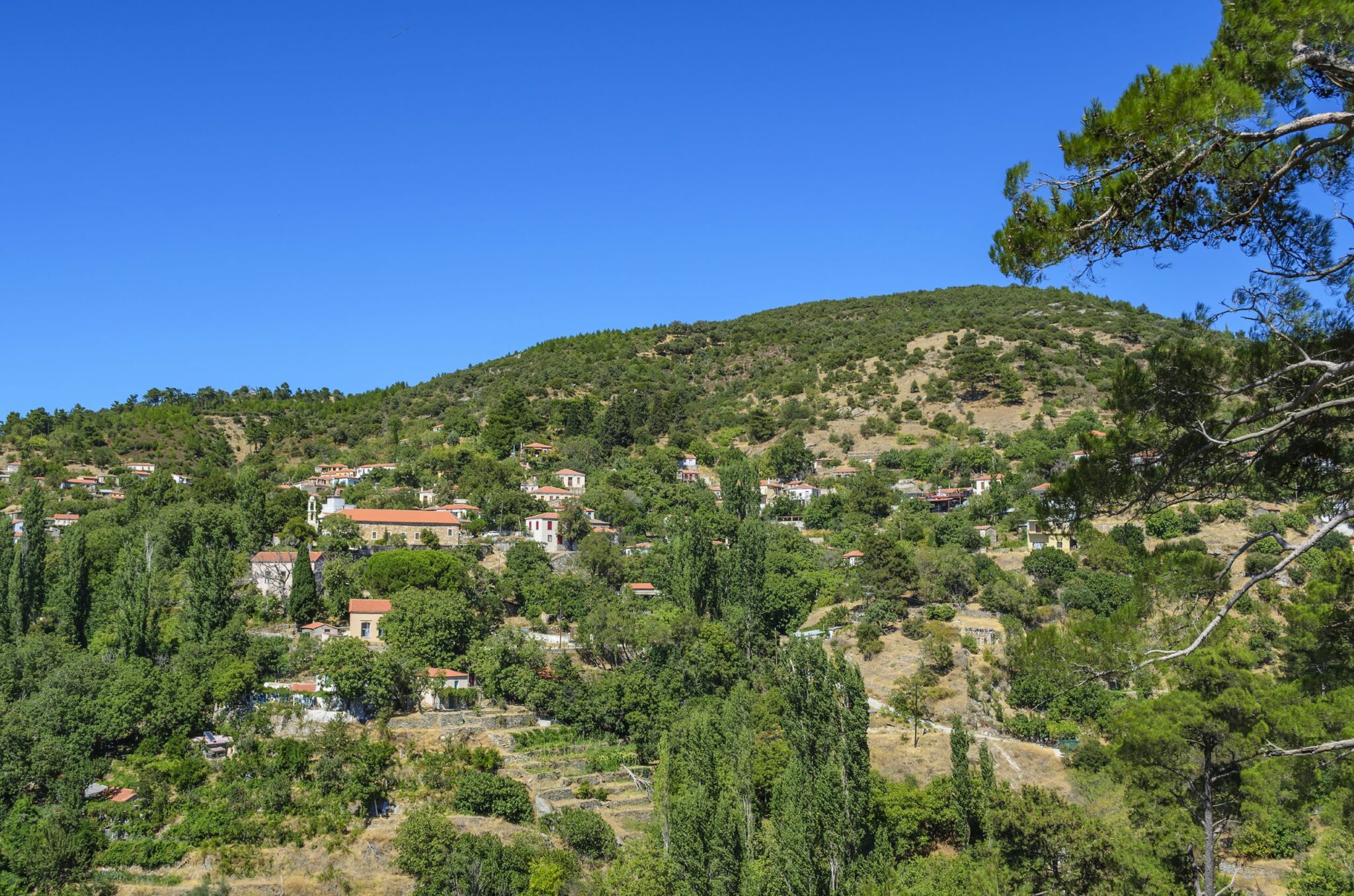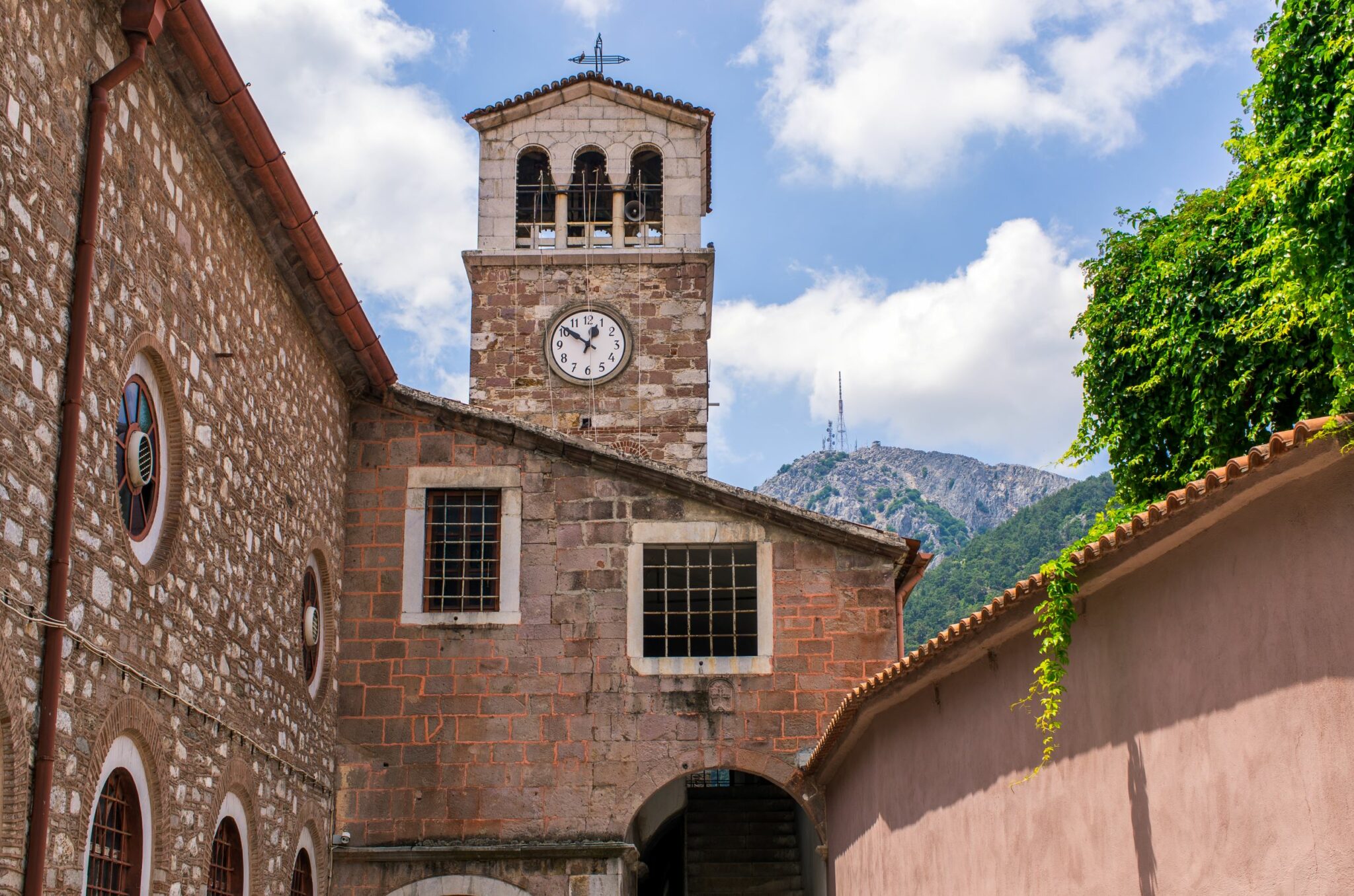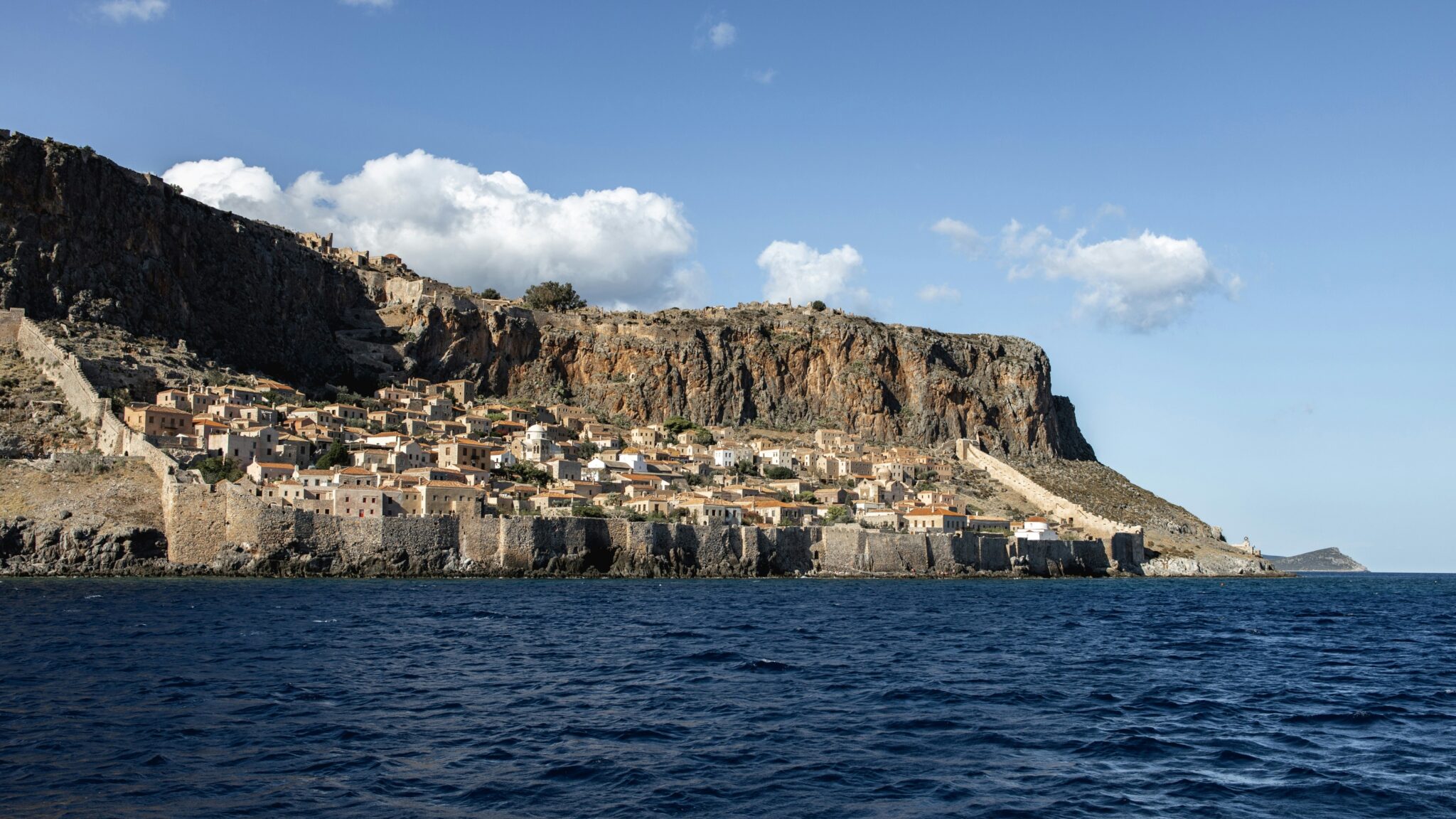Lesvos is the island of ouzo, olive oil and sardines, the island of traditional villages, of old coffee shops that preserve their distinct character, and of hospitable people. Suprisingly, the most beautiful of these villages is not coastal.
Steeped in tradition and flooded with colour, Agiasos, 27km (18mi) from the town of Mytilene, is 460m (1509ft) on the slopes of mount Olympus.
According to the most reliable theory, its, relatively short for Greek standards, history starts 12 centuries ago, in the Byzantine era, during the wars of iconoclasm. That’s when the iconophile priest of the Chapel of the Palaces, Agathon, came from Jerusalem. With him, he had a piece of the True Cross (from the crucifixion), an icon of the Holy Mother and a handwritten Gospel. He set his hermitage there and the place became renowned among pilgrims all around Lesvos. The hermitage gradually turned into a monastery, and the monastery into a settlement. And all thanks to the famous icon of “Panayia I Vrefokratousa” (Madonna and the Holy Infant) with the inscription Mitir Theou, Agia Sion, that is, “Mother of God, Holy Sion”. According to tradition, the name Agiasos is a corruption of the inscription.
Hundreds of years later, in the early 18th century, the village gained special privileges with a firman by the Sultan. The residents of Agiasos are exempted from paying taxes both to the Ottoman state and to the Mytilene government. This resulted in a mass migration of skilled craftsmen from all over Lesvos who moved there to be able to sell their products tax free.
The village flourished, and by 1783 that the firman was abolished, Agiasos had already become famous for its craftsmen and products. When Lesvos finally became part of Greece, in 1912, the village had a population of over 7,000. Of course, today it has fewer residents, but it’s still one of the most beautiful island villages in Greece.
The way the village looks today, with the stone houses with their monochromed shutters and balconies, is, to a great extent, due to the 1877 fire that destroyed big part of the village. The houses were rebuilt, and the village started looking like it does today. If you walk on the streets of Agiasos you’ll be impressed by the varied pallet used on the buildings that blend distinctively with the lush mountain vegetation spilling into the village.
Walk around the village’s alleys, sit at a coffee shop, enjoy the architecture. And buy a traditional craftwork or a souvenir from one of the many shops around the village.
Anagnostirio (reading room)
The Anagnostirio building complex of Agiasos “I Anaptixi” is located at the town hall square, at the village’s entrance. It’s one of the oldest and most historic cultural centre’s in Greece. It was founded in 1894, while the island was still under Ottoman rule and contributed to a great extent to the education and cultural development of the village and the wider area. Today it has a library of over 25,000 books, a cinema and theatre hall, and a folk museum that will enlighten you about both the village’s and Mytilene’s history.
Panagia and its festival
The church of Panagia was built in 1815 and is the third to be built in that location. It attracts thousands of pilgrims every year, not just from Lesvos, due to the icon of Panagia that, tradition has it, is the creation of Luke the Evangelist. In 1453, the village’s Christians, seeing that the icon had started to ware with the passage of time, commissioned an artist to make a replica and hid away the original. In 1838, the original was re-discovered, restored, and placed in a wooden display with a double glass, inside the marble shrine, in front of the replica icon, that’s in the altar.
The icon attracts thousands of pilgrims, many of whom walk the distance from Mytilene and other villages around Lesvos, for the main festival on August 15th. On the eve and on the day of the celebration the village is over-run by a buzzy travelling bazaar selling toys, small objects, food etc.
A place for hiking lovers
The nature around the village is bound to offer an unforgettable experience for those who love hiking. There are many trails, well-preserved, restored, and well-marked, for hikers of all levels. There are also some trails that are not in a great condition. If we had to choose one, we would recommend the one that leads to the top of mount Olympus, from where you can enjoy a unique view (you can also reach it by car).
When to visit
Agiasos, being an island village on a mountain is a great destination for most of the year. But it’s especially worth visiting in Autumn and Spring to enjoy its nature.
Food to try
Obviously, when you’re in Lesvos your gastronomic journey will include a lot of fish and seafood. In Agiasos in particular, it’s also worth trying local products like chestnuts, ladotiri cheese, hahles (a type of trachanas – traditional pasta made with flour and yogurt or milk – in the shape of a boat), rusks, wild greens picked from the mountain, rice dolmadakia (stuffed vine leaves), stuffed courgette flowers etc. You must sit at one of the traditional coffee shops in the village and have a Greek coffee, that will be served with a spoon sweet (traditional preserves).
Visit: www.agiasos.gr
Read also:
Lesvos: Gastronomic paradise of the Northern Aegean with turquoise waters and sandy beaches
Flavours of Samos: From Traditional Tavernas to Modern Gourmet Restaurants
Visiting Chios: Scenic windmills, the scent of mastic, villages perched on the rock



